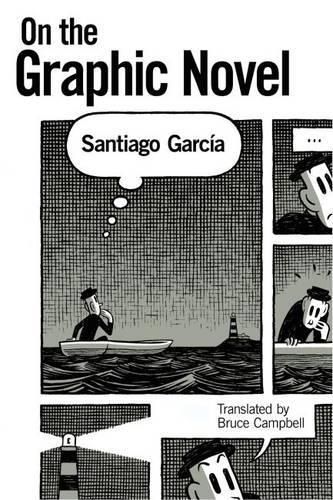Readings Newsletter
Become a Readings Member to make your shopping experience even easier.
Sign in or sign up for free!
You’re not far away from qualifying for FREE standard shipping within Australia
You’ve qualified for FREE standard shipping within Australia
The cart is loading…






This title is printed to order. This book may have been self-published. If so, we cannot guarantee the quality of the content. In the main most books will have gone through the editing process however some may not. We therefore suggest that you be aware of this before ordering this book. If in doubt check either the author or publisher’s details as we are unable to accept any returns unless they are faulty. Please contact us if you have any questions.
A noted comics artist himself, Santiago Garcia follows the history of the graphic novel from early nineteenth-century European sequential art, through the development of newspaper strips in the United States, to the development of the twentieth-century comic book and its subsequent crisis. He considers the aesthetic and entrepreneurial innovations that established the conditions for the rise of the graphic novel all over the world. Garcia not only treats the formal components of the art, but also examines the cultural position of comics in various formats as a popular medium. Typically associated with children, often viewed as unedifying and even at times as a threat to moral character, comics art has come a long way. With such examples from around the world as Spain, France, Germany, and Japan, Garcia illustrates how the graphic novel, with its increasingly global and aesthetically sophisticated profile, represents a new model for graphic narrative production that empowers authors and challenges longstanding social prejudices against comics and what they can achieve.
$9.00 standard shipping within Australia
FREE standard shipping within Australia for orders over $100.00
Express & International shipping calculated at checkout
This title is printed to order. This book may have been self-published. If so, we cannot guarantee the quality of the content. In the main most books will have gone through the editing process however some may not. We therefore suggest that you be aware of this before ordering this book. If in doubt check either the author or publisher’s details as we are unable to accept any returns unless they are faulty. Please contact us if you have any questions.
A noted comics artist himself, Santiago Garcia follows the history of the graphic novel from early nineteenth-century European sequential art, through the development of newspaper strips in the United States, to the development of the twentieth-century comic book and its subsequent crisis. He considers the aesthetic and entrepreneurial innovations that established the conditions for the rise of the graphic novel all over the world. Garcia not only treats the formal components of the art, but also examines the cultural position of comics in various formats as a popular medium. Typically associated with children, often viewed as unedifying and even at times as a threat to moral character, comics art has come a long way. With such examples from around the world as Spain, France, Germany, and Japan, Garcia illustrates how the graphic novel, with its increasingly global and aesthetically sophisticated profile, represents a new model for graphic narrative production that empowers authors and challenges longstanding social prejudices against comics and what they can achieve.